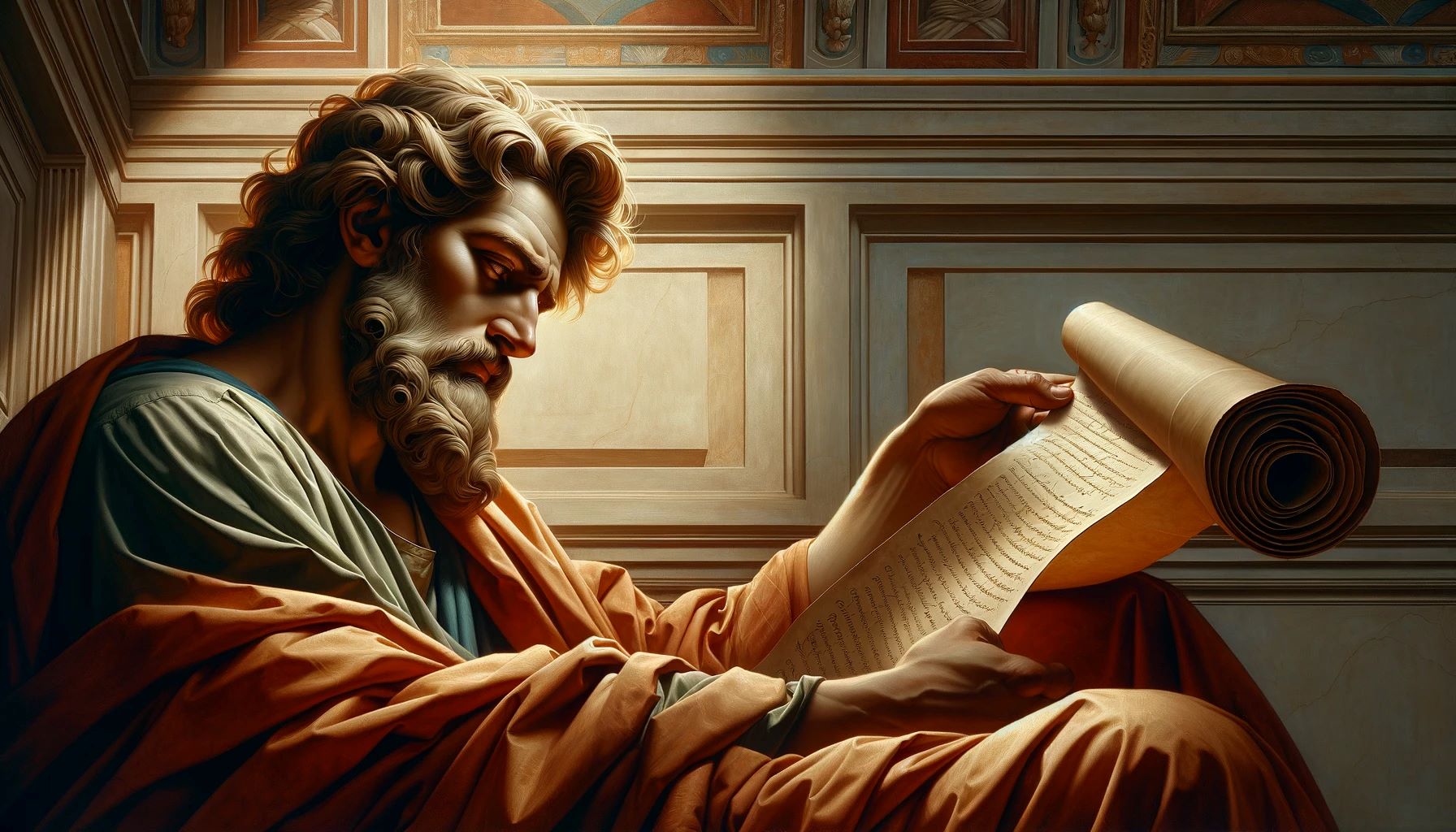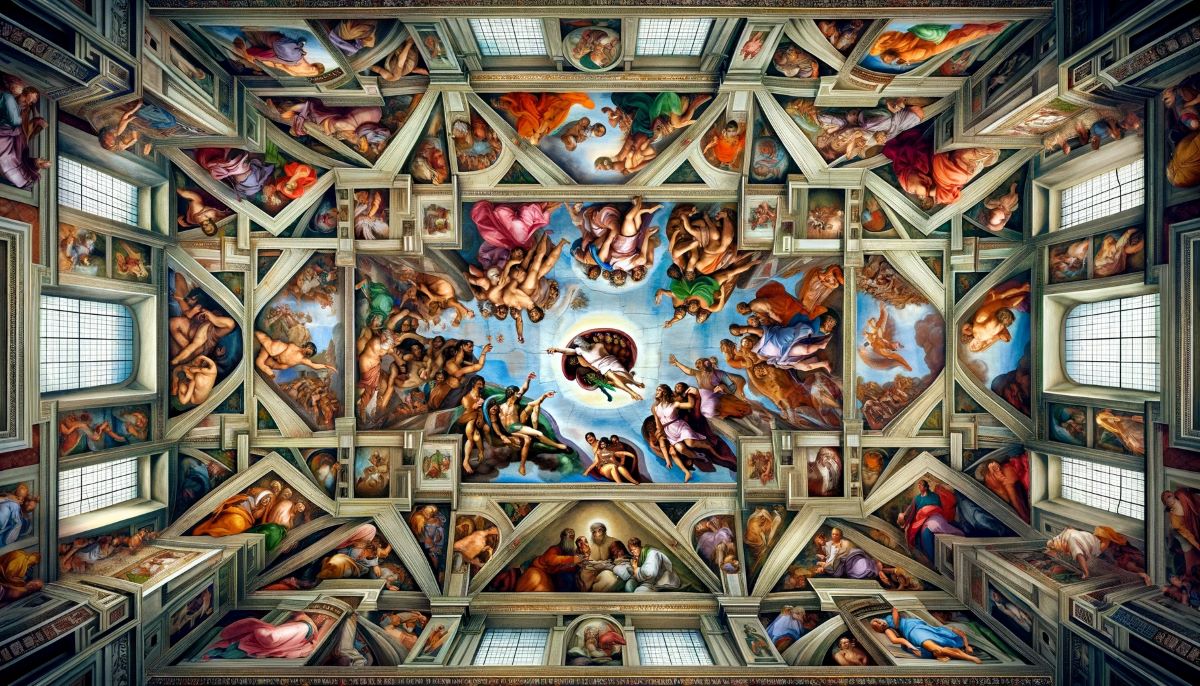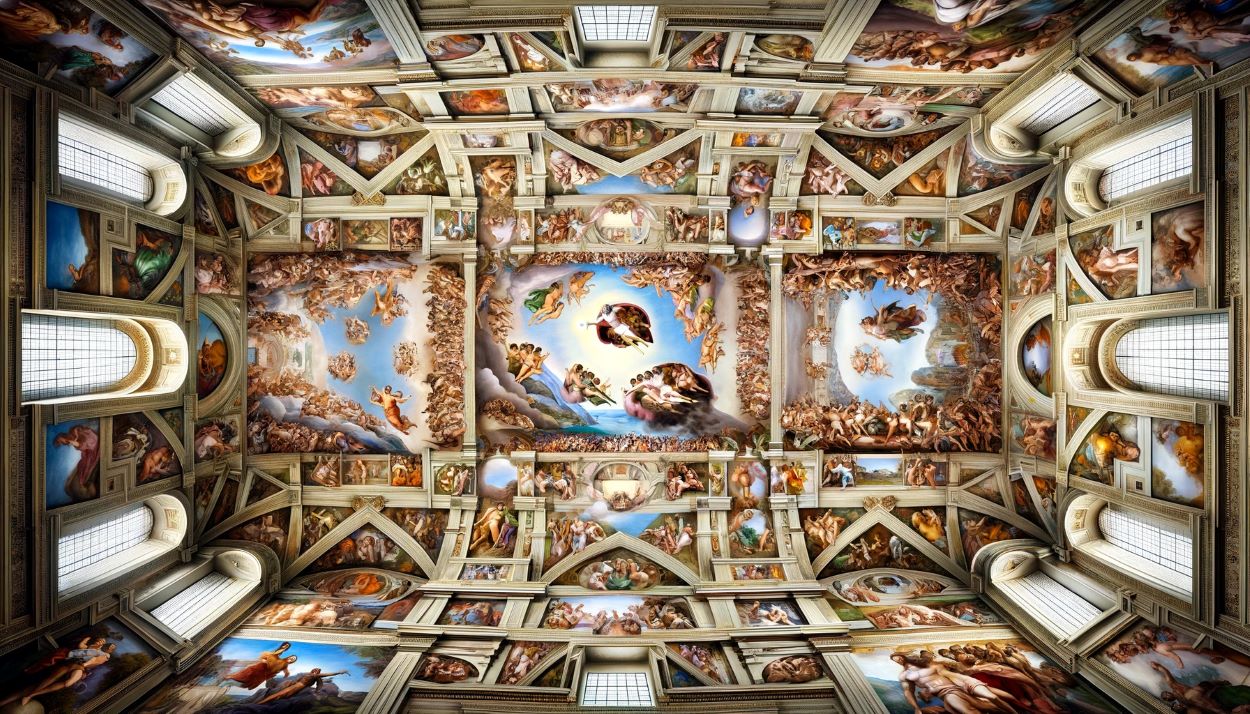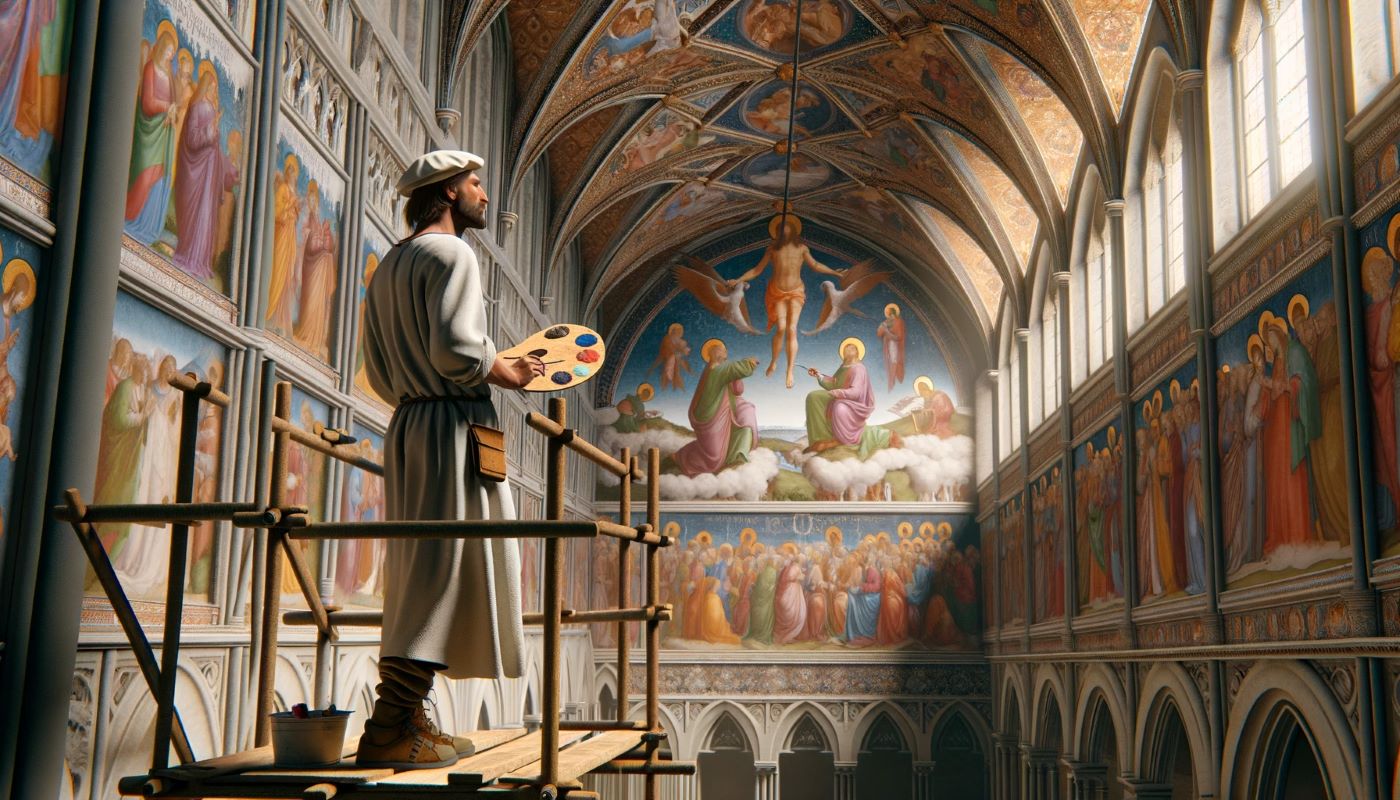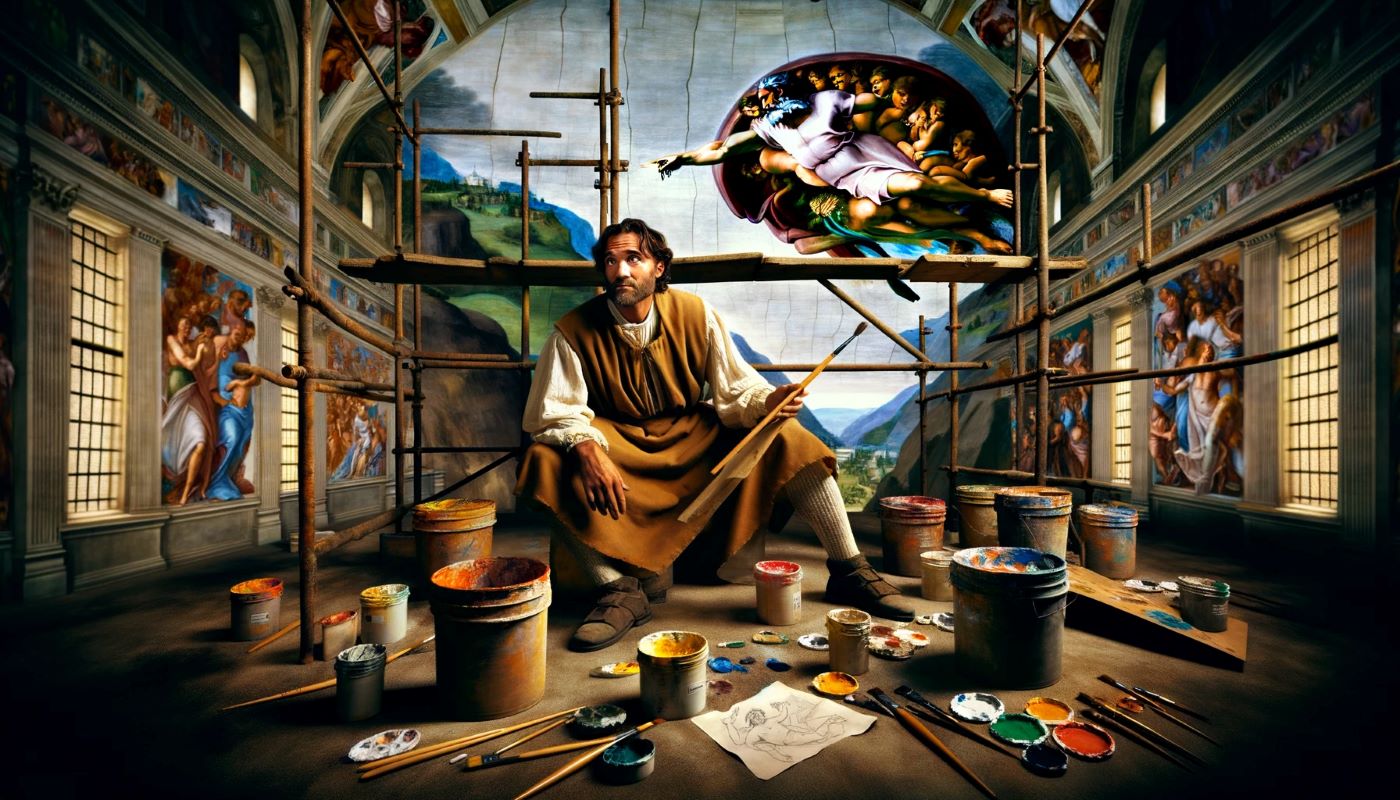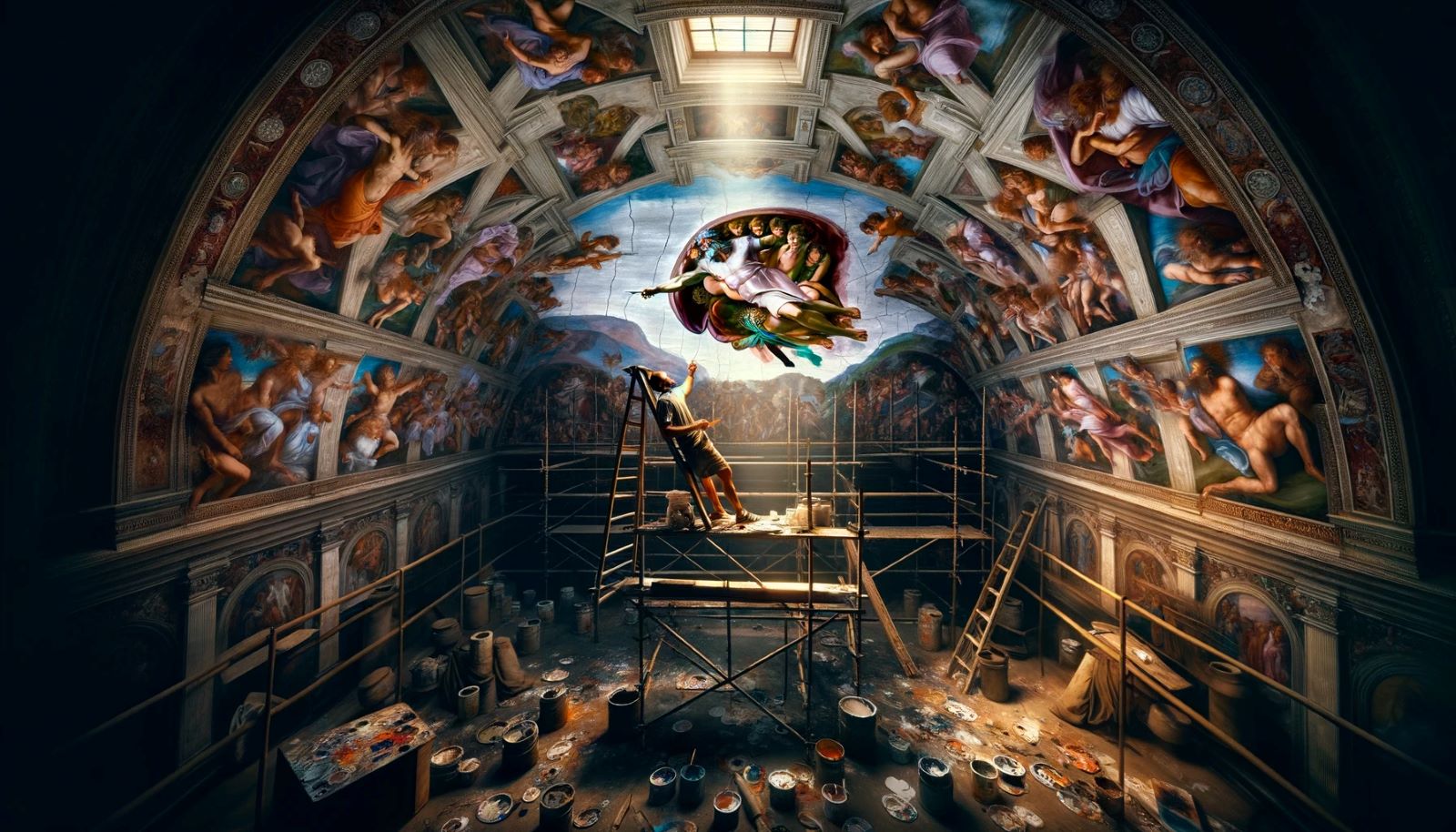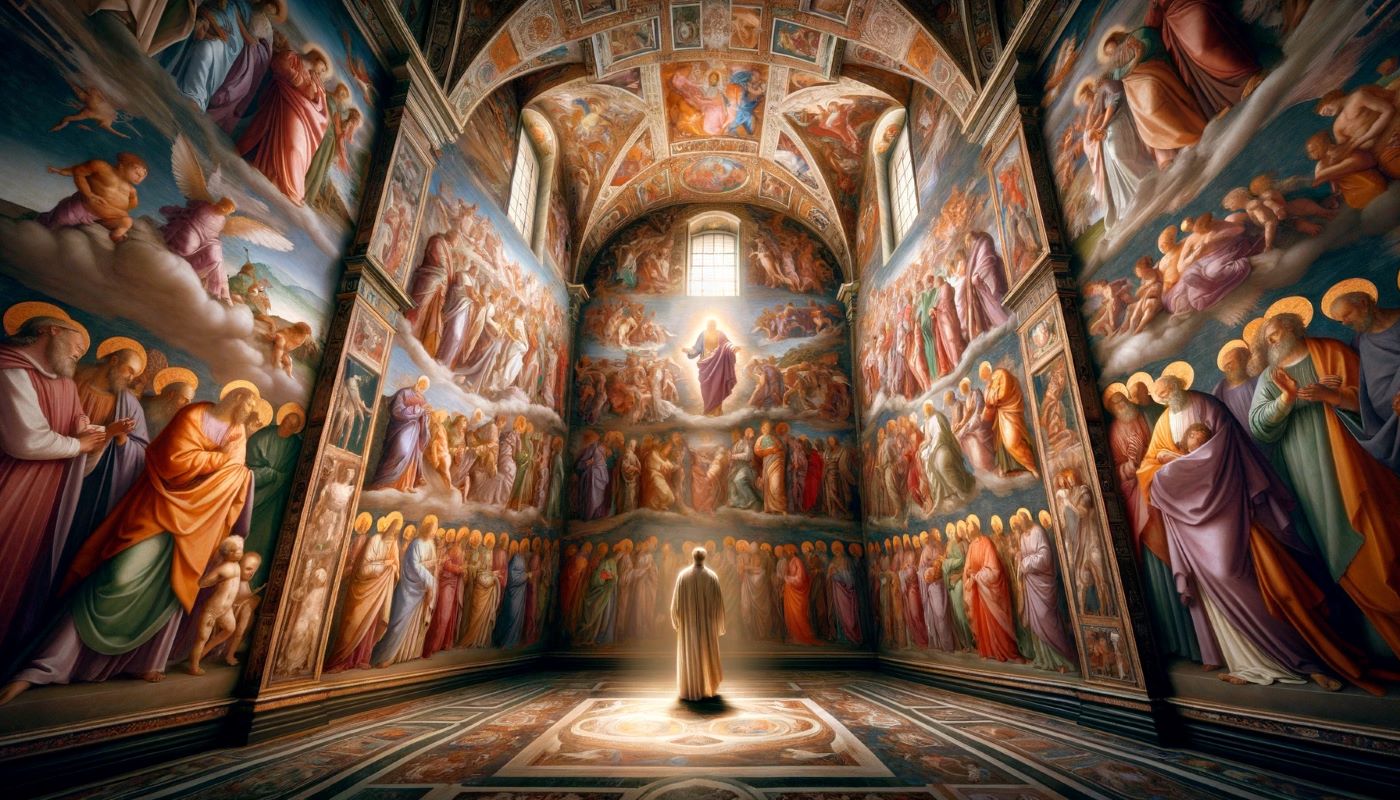Home>Arts and Culture>Who Was Famous For Creating The Statue Of David And Painting The Sistine Chapel?


Arts and Culture
Who Was Famous For Creating The Statue Of David And Painting The Sistine Chapel?
Published: March 4, 2024
Ericka Andersen, an editor at Christian.net, expertly merges digital strategy with content creation, focusing on faith and societal issues. Her communication skills enhance the platform's engaging narratives, fostering meaningful dialogue on belief's impact on society.
Discover the genius behind the Statue of David and the Sistine Chapel. Explore the life and works of this renowned figure in arts and culture.
(Many of the links in this article redirect to a specific reviewed product. Your purchase of these products through affiliate links helps to generate commission for Christian.net, at no extra cost. Learn more)
Early Life and Education
The individual renowned for creating the Statue of David and painting the Sistine Chapel is none other than Michelangelo. Born on March 6, 1475, in Caprese, Italy, Michelangelo Buonarroti was a prominent figure of the Italian Renaissance. He was the second of five sons, born to a family of modest means. His father, Ludovico di Leonardo di Buonarotto Simoni, was a magistrate, and his mother, Francesca di Neri del Miniato di Siena, hailed from a noble and respected Florentine family. From an early age, Michelangelo showed a keen interest in art and was encouraged by his mother to pursue his passion. At the tender age of 13, he was apprenticed to the painter Domenico Ghirlandaio, where he honed his skills and developed a deep appreciation for the arts. This early exposure to the world of art would set the stage for Michelangelo's illustrious career as a sculptor, painter, and architect.
The Statue of David
The Statue of David is one of Michelangelo's most iconic works and a masterpiece of Renaissance sculpture. Commissioned in 1501, the statue was intended to be part of a series of sculptures depicting prophets for the Florence Cathedral. However, due to the exceptional quality of Michelangelo's work, the statue was placed in a public square, where it quickly gained admiration for its remarkable artistry and symbolism.
1. Symbolism and Meaning
The Statue of David stands at an imposing 17 feet tall and portrays the biblical hero David, who defeated the giant Goliath with a single stone. Michelangelo's depiction of David captures the moment before the battle, conveying a sense of focused determination and strength. The statue's intense gaze and muscular physique symbolize the triumph of good over evil and the power of human spirit and intellect.
2. Artistic Mastery
Michelangelo's meticulous attention to detail is evident in the intricate carving of the statue, particularly in the lifelike rendering of David's veins, tendons, and muscles. The use of marble as the medium for the sculpture further highlights Michelangelo's extraordinary skill, as he transformed a solid block of stone into a work of art that exudes vitality and dynamism.
3. Historical Significance
The Statue of David is not only a testament to Michelangelo's artistic genius but also a symbol of the Renaissance ideals of humanism and individualism. Its creation marked a significant shift in the portrayal of the human form, emphasizing the beauty and perfection of the human body as a reflection of divine creation.
4. Legacy and Influence
Over the centuries, the Statue of David has continued to captivate and inspire audiences worldwide. Its influence extends beyond the realm of art, serving as a symbol of courage, resilience, and the enduring pursuit of excellence. Today, the statue is housed in the Galleria dell'Accademia in Florence, where it remains a timeless testament to Michelangelo's unparalleled talent and the enduring legacy of the Italian Renaissance.
The Sistine Chapel
The Sistine Chapel stands as a testament to Michelangelo's extraordinary talent and unwavering dedication to his craft. Commissioned by Pope Julius II in 1508, the Sistine Chapel ceiling became one of the most celebrated masterpieces in the history of art. Here's a closer look at the significance and enduring legacy of Michelangelo's awe-inspiring work within the Sistine Chapel.
1. Ambitious Undertaking
The Sistine Chapel ceiling presented Michelangelo with a monumental artistic challenge. Spanning over 5,000 square feet, the ceiling offered a vast expanse for Michelangelo to showcase his artistic prowess. The project required him to paint a series of intricate frescoes depicting scenes from the Book of Genesis, including the iconic portrayal of the Creation of Adam.
2. Artistic Innovation
Michelangelo's approach to the Sistine Chapel ceiling was nothing short of revolutionary. Working against the constraints of painting on a curved surface, he employed innovative techniques to create a sense of depth and perspective. His masterful use of light and shadow brought the scenes to life, infusing them with a remarkable sense of drama and emotional intensity.
3. Symbolism and Theological Significance
Beyond its artistic brilliance, the Sistine Chapel ceiling holds profound symbolism and theological significance. Each panel on the ceiling conveys a rich narrative, from the creation of the world to the fall of humanity and the promise of redemption. Michelangelo's interpretation of these biblical stories transcends mere illustration, offering a profound meditation on the human condition and the divine plan.
4. Enduring Impact
The impact of Michelangelo's work in the Sistine Chapel reverberates through the annals of art history. His innovative techniques and unparalleled artistry set new standards for future generations of artists. The Sistine Chapel ceiling continues to draw countless visitors from around the globe, leaving them in awe of Michelangelo's ability to transform a sacred space into a transcendent work of art.
5. Preservation and Restoration
In recognition of the historical and cultural significance of the Sistine Chapel ceiling, extensive efforts have been made to preserve and restore Michelangelo's masterpiece. Ongoing conservation work ensures that future generations will have the opportunity to marvel at the timeless beauty and profound impact of this extraordinary artistic achievement.
6. Legacy of Inspiration
The Sistine Chapel ceiling stands as a testament to the enduring power of art to inspire, uplift, and transcend the boundaries of time and space. Michelangelo's magnum opus continues to ignite the imagination of artists, scholars, and admirers, serving as a timeless reminder of the boundless potential of human creativity and the enduring legacy of one of history's greatest artistic visionaries.
Legacy and Impact
Michelangelo's legacy and impact on the world of art and culture are immeasurable. His contributions have left an indelible mark, shaping the course of Western art and inspiring countless generations of artists, scholars, and admirers. Here's a closer look at the enduring legacy and profound impact of Michelangelo's unparalleled talent and artistic vision.
-
Artistic Influence: Michelangelo's artistic legacy continues to resonate across the centuries, influencing a myriad of artistic movements and individual artists. His innovative techniques, mastery of the human form, and ability to imbue his works with profound emotion have set a standard that artists aspire to emulate. From the High Renaissance to the present day, Michelangelo's influence can be seen in the works of renowned artists and in the evolution of artistic expression.
-
Cultural Reverence: Michelangelo's works have transcended the realm of art, becoming cultural touchstones that evoke awe and admiration. The Statue of David and the Sistine Chapel ceiling are revered as symbols of human achievement and the pursuit of excellence. They stand as testaments to the enduring power of creativity and the capacity of art to elevate the human spirit.
-
Architectural and Sculptural Legacy: In addition to his renowned sculptures and paintings, Michelangelo's architectural legacy is equally profound. His designs and contributions to architectural marvels such as St. Peter's Basilica in Rome have left an indelible imprint on the landscape of Western architecture. His sculptural works, including the Pietà and Moses, continue to captivate audiences with their exquisite beauty and emotional resonance.
-
Educational Inspiration: Michelangelo's life and work serve as a wellspring of inspiration for art education and scholarship. His dedication to his craft, unwavering commitment to excellence, and relentless pursuit of artistic innovation provide invaluable lessons for aspiring artists and scholars. His legacy continues to enrich the educational landscape, serving as a source of study and contemplation for art enthusiasts and scholars alike.
-
Global Endearment: Michelangelo's legacy extends far beyond the borders of Italy, resonating with people from diverse cultures and backgrounds. His works have become global treasures, drawing visitors from around the world to marvel at their timeless beauty and profound significance. The universal appeal of Michelangelo's art speaks to the enduring power of creativity to transcend linguistic, cultural, and temporal barriers.
-
Perpetual Inspiration: Perhaps the most enduring aspect of Michelangelo's legacy is the perpetual inspiration his works impart. They serve as a reminder of the boundless potential of human creativity, the resilience of the human spirit, and the enduring pursuit of artistic excellence. Michelangelo's legacy continues to inspire individuals to reach for the highest aspirations and to recognize the transformative power of art in shaping the human experience.
Michelangelo's legacy and impact endure as a testament to the transcendent power of art to elevate, inspire, and endure through the ages. His contributions have enriched the cultural tapestry of humanity, leaving an indelible imprint that will continue to resonate for generations to come.
